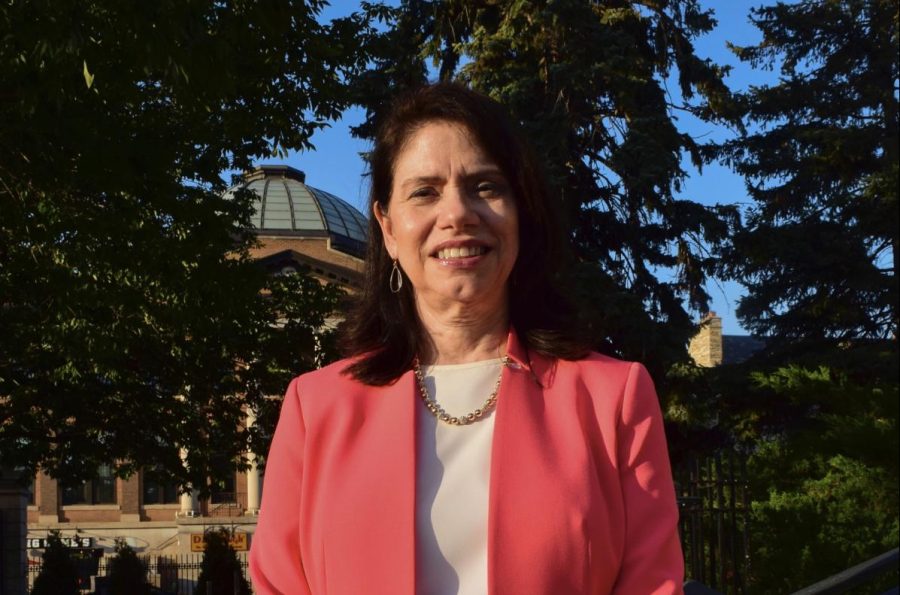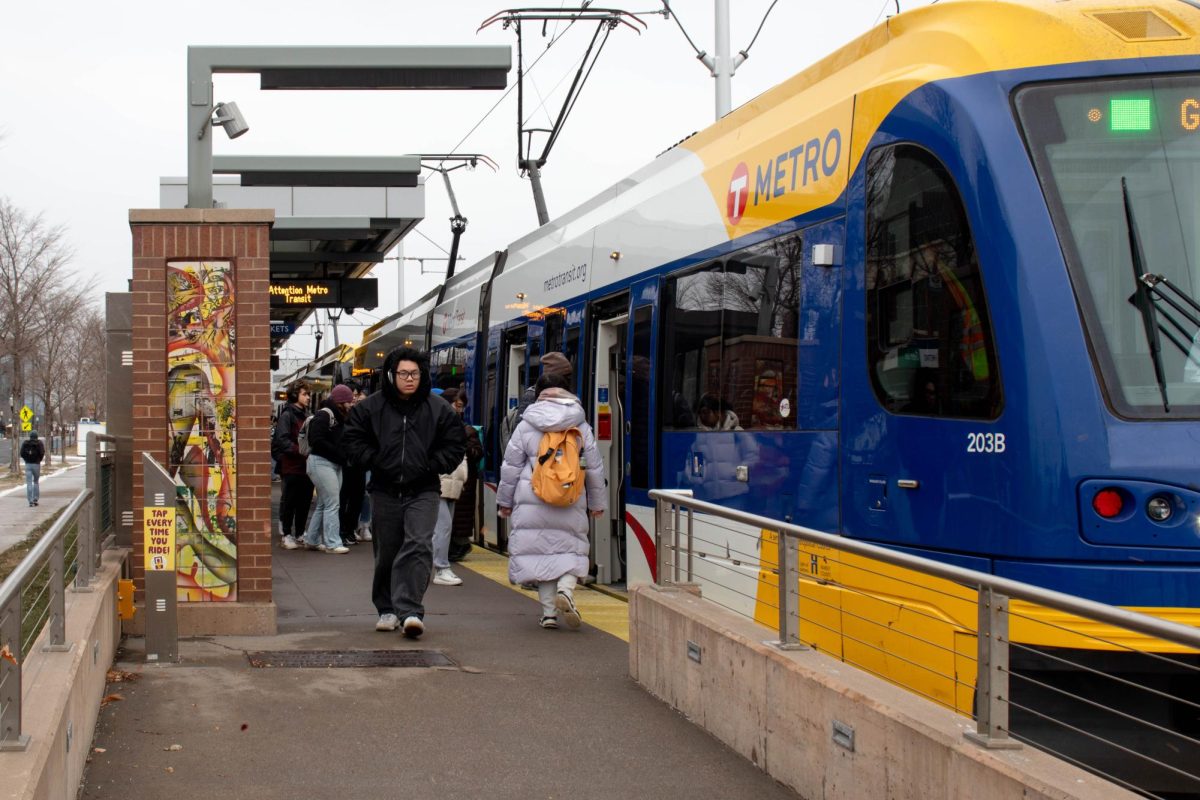Students and community members filled the lawn outside Northrop Auditorium Friday afternoon to support environmental initiatives and celebrate nearly 50 years of Earth Day.
Fighting climate change with social equality is at the forefront of University students’ efforts this year. But that has not always been the case with environmental activism at the University. Many said this illustrates the way the environmental movement has been changing with the times.
When student activists began celebrating Earth Day nearly 50 years ago, their aims were different than those of today’s activists. Reducing nuclear energy and figuring out how to support a growing population were front and center among issues.
In the 1970s, “there was a myth that we needed to protect the environment from people,” said Sam Grant, who teaches an environmental sustainability program for the Higher Education Consortium for Urban Affairs (HECUA).
Now, Grant said, people are beginning to understand that people are part of the environment.
“We don’t know how to heal the earth, heal each other and co-create, but that’s the challenge of this particular generation of environmental activism … to really focus on intersectional healing,” Grant said.

Almost 50 years later, students still lead the charge
For this year’s Earth Day, student organizers are honing in on how climate change impacts people differently. This highlights the importance of merging environmental and social justice to help fight climate change.
A diverse group of students gathered on the Northrop lawn on Friday to show support for environmental change, which they say requires justice and cross-cultural communication.
University student group Voices for Environmental Justice, which facilitated this year’s event, created a petition asking for environmental justice topics to be integrated into University curriculum through coursework and the creation of a major and minor, said Sara de Sobrino, a member of the student group.
“We want to inspire people to continue this,” said Dania Marin-Gavilan, another facilitator for the student group.
Around 20 student groups, cultural groups and grassroots entities came together this year to lead a week of Earth Day initiatives on campus, including workshops, said Nick Knighton, a facilitator for Voices for Environmental Justice.
“We realize in order to get people involved in a movement, it should be fun,” Knighton said. “We are doing justice work and building a better world.”

When did students start celebrating earth day at the U?
Since Earth Day was established on April 22, 1970 by former Sen. Gaylord Nelson, D-Wis., students have been at the forefront of Earth Day initiatives at the University of Minnesota.
To commemorate two decades of Earth Day celebrations, Aron Pilhofer and other University students organized a campus-wide event in 1990 on the lawn between Coffman Union and Northrop.
During the Earthfest event, coordinators arranged to have props regarding environmental issues put on the mall, including a trailer-sized wind turbine to promote alternative energy sources.
“It was a weird event; we put environmental stuff all over the mall,” Pilhofer said. He remembers being unable to sleep the night before because everything came together so quickly.
The same year, Owen Byrd, a national campus coordinator for Earth Day 1990, set out to encourage universities to work on environmental justice initiatives.
He encouraged student organizations to look at how their campus was doing with recycling and energy conservation, which were the issues students were advocating for in 1990, he said.
The University of Minnesota was ahead of its time and established a recycling program in 1984. Byrd said the University was good at engaging with local communities to work on environmental initiatives.
“If you look at the history of successful social change, it is almost always driven by young people,” Byrd said.
Earth Day circa 1972
Louis Alemayehu remembers attending demonstrations advocating for the environment at the University as a graduate student in the 1970s. He said Earth Day and environmental initiatives were largely white-led movements then, but that is changing.
“All the movements that have happened between then and now have made this possible,” he said during Friday’s demonstration at Northrop. “It hasn’t been easy.”
Based on a 1972 United Nations environmental manifesto, the push to help the environment back then was mainly focused on the harm of nuclear energy and a fear of not having enough food and other resources to support a growing population. Climate change was not a mainstream concept at the time.
Two years after the first Earth Day, University students organized a week full of speakers, musicians and a bike ride to the State Capitol to raise awareness of environmental issues.
During one Earth Week event, attendance was so high for a speaker at Coffman Union that students spilled out onto the mall.
Demonstrations against the Vietnam War overlapped with Earth Week celebrations that year. Students used several Earth Week banners to create a barricade during an anti-war demonstration, said Ed Finklea, a University student who helped organize the 1972 Earth Week celebration.
“All in all, we were part of the same thing,” Finklea said of the Earth Week celebration and anti-war protests. “The whole idea was that it was positive change.”
Finklea credits a few professors, including Dean Abrahamson of the Humphrey School of Public Affairs, to leading the environmental movement at the time by encouraging students to pursue initiatives.
“They made us young people think about the environment,” he said.








